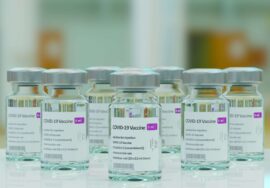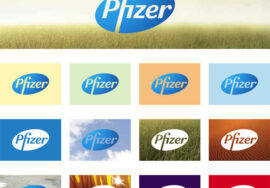
Healthcare Industry APPs
APP fever seems to have gripped the healthcare industry where product managers feel somehow out-of-touch if they don’t have a phone APP in development. In this article we’ll look at reasons why you might want to develop an APP to support your product, cover some of the practical issues to consider when commissioning an agency to develop an APP for you and list some of the most popular APPs currently available for download.
APP is short for application and is basically a programme written to perform a particular function. These days the term is largely associated with applications for mobile phones and tablet devices.
Why an APP?
As with any marketing tactic, it is always important to take a step back and ask “why am I doing this?” What are your marketing and communication objectives and how will developing an APP contribute? Are you raising disease awareness? Facilitating the use of a medical device? Supporting diagnosis? Developing as part of therapy support package for patients? Encouraging therapy adherence?
Sometimes an APP may not be the best solution at all. If you are simply providing access to information already available on your website, a better (and cheaper) option may be to simply produce a mobile-optimised version of your website. The most interesting medical APPs make full use of a phone/tablet’s functionality (camera, video GPS/mapping etc) rather than just providing a repository of medical information (as many do).
iPads and other tablet devices are becoming increasingly popular with pharmaceutical and healthcare sales teams and a brisk business is being done developing ‘internal’ APPs. These are APPs designed solely for a company’s internal use, and not generally available for downloading in the APP store. Whilst these can offer a very streamlined detailing tool, before you pay a developer several thousand pounds for spending hours programming in Objective C with Apple’s X-Code, it might be worth considering whether the same functionality couldn’t be achieved using presentation software like Powerpoint or Keynote
If you do decide that an APP is an important part of your communications mix, and you are planning to develop a clinical tool with potential impact on patient health, you should think carefully about liability issues and aim to validate your product as robustly as possible, including appropriate disclaimers and terms & conditions; APPs are appearing on the radar of regulatory authorities on both sides of the Atlantic. In 2011 the US Food and Drug Administration produced draft guidelines suggesting that a small number of medical APPS that “may impact on the performance or functionality of currently regulated medical devices” will require FDA oversight. Examples cited include “APPS that are used as an accessory to a medical device already regulated by the FDA”. Also, APPs that “transform a mobile communications device into a regulated medical device by using attachments, sensors or other devices (For example, an application that turns a smartphone into an ECG machine to detect abnormal heart rhythms or determine if a patient is experiencing a heart attack).” At time of writing, these guidelines have yet to be finalised, although plenty of companies already have 510(k) approval for their APPs: MobiHealthNews recently reported that there are “more than 75 FDA regulated mobile medical APPs”. Many of these are companion APPs to an approved medical device, such as an APP that logs patient data received from a WIFI enabled diabetes monitor.
In 2012, the UK Medicines & Healthcare Products Regulatory Agency (MHRA) registered the first ever APP as a class I medical device. [The Mersey Burns APP is a clinical tool for estimating burn area % and recommending fluid protocol for burns patients].
Before any design and build work is commenced, it is always a good idea to speak to your target audience to ensure you are developing something for which there is a need. Whether you are developing a patient or HCP APP, focus groups are a great way of brain-storming ideas and it may even be a good idea to get the developers to attend these sessions themselves.
Which Platform?
It is astonishing to remind ourselves that Apple’s APP store only opened for business in July 2008: there are currently estimated to be around three quarters of a million APPs available for download from the APP store. There are three other principal platforms on which phone APPs are built:
1. Android: this is the mobile operating system owned by Google, and Android APPs are available to purchase through “Play”- basically the Google/Android equivalent of the APP store. A variety of devices run Android including Samsung, HTC, LG and Motorola (which is now owned by Google). There are now a very similar number of Android APPs available as Apple ones
2. Blackberry: APPs designed to run on the Blackberry operating system are available through their own “App World” store.
3. Windows: APPs for the newly launch Windows 8 and mobile Windows RT operating systems are available through the Windows Store
In addition, Amazon has recently opened its own ‘APP store’* for their Kindle Fire tablet devices (there are rumours of a Kindle mobile phone on the way). The Kindle is based on the Android operating system and some, but not all, Android APPs are available to download.
Once you have decided to develop a phone APP, one of the first questions to ask is which platforms to offer the APP on. Use of tablets and smart phones in the healthcare community is exploding and there is a strong bias towards Apple devices. Research company “Manhattan” estimate that 62% of US doctors use tablets for professional purposes (most of which will be iPads). In Europe figures from the end of 2011 estimated that 26% of European doctors owned an iPad; in the UK that figure is thought to be even higher. Doctors.net agree that, in the UK, there is an overwhelming preference for Apple mobile devices when accessing their web portal, with access from iPad now almost as common as from iPhone. So if you are going to develop your APP on just one platform, you won’t be surprised to hear that it has to be on Apple’s iOS operating system.
Number two would have to be Android. Google are catching up fast with Apple and now have around the same number of total APPs available for download.
At this stage, it is probably not worth considering developing your APP for Blackberry and Windows. APPs are just one of a few areas where Blackberry has been trailing the competition recently. The launch of Blackberry 10 handsets earlier this year will be make or break for the company, although there have already been reports of retailers discounting the flagship Z10 handset. Microsoft are working hard to improve the range of APPs available for Windows phones on the back of the aggressive launch of Windows 8, with its touch-screen oriented design: over 60% of the 100 most popular APPs are now available for Windows 8 phones, so watch this space.
So you have decided that a mobile APP is a key part of your 2013 marketing mix, you’ve decided you want to develop for Apple and Android, you now need to find a suitable company to work with. No doubt your current “full service” advertising / medical communications agency will be falling over themselves to assure you they have relevant expertise. This may very well be the best way forward: they (should!) know your product and market well already and, even if they outsource the development, can work with you to ensure delivery of a product that meet the needs of your customers as well as your own communication objectives. You may, however, want to consider employing a specialist APP development company. Whilst your own product/disease area may be a bit of a mystery to them, they should have a good working knowledge of APP functionality that is already out there, offering ideas for your own APP.
One question you should ask early on in the process, if you are developing APPs for multiple platforms, is whether coding for the APP will be written on a cross-platform framework or whether the APPs are to be developed separately using native code. The former option has the advantage of requiring less development time (and so is generally cheaper). However, APPs developed using cross-platform frameworks (such as Appcelerator’s Titanium) may not run as fast and functionality may not work as smoothly.
What Medical APPs are out there?
• In the UK two of the most downloaded iOS APPs within the medical category include:
Embarrassing Bodies- My Health Checker
Clearly benefitting from the exposure provided by the Channel 4 TV show, this APP provides patients with a collection of health assessment tools including BMI calculator, colour blindness test and short-term memory test
Pregnancy
Hugely popular with expectant Mums on both sides of the Atlantic, this comprehensive APP is available in a fee ‘Lite’ version as well as a paid ‘++’ versions. Even the free version is packed with useful tools and information from doctor appointment tracker function to graphics of what your unborn child looks like.
• Many of the best medical APPs of most potential use to practitioners and patients alike have not been developed by pharma and healthcare companies but by government bodies and practicing clinicians:
NICE Guidance
Fully searchable access to full text of all currently available NICE guidelines
NICE BNF
Access to complete BNF offline, fully searchable. Includes content bookmarking and up-date notifications when new editions available
NHS Direct
Comprehensive symptom checker including personalised guides to looking after yourself
CDC
Easy access to an array of health information, featuring latest articles, disease of the week, popular journals.
NHS Drinks Tracker
Quickly calculate your drinks units, keeping track of your drinking and offering personalised feedback.
ClickClinica
Liverpool University’s Institute of Infection and Global Health recently launched this surveillance tool for infectious disease. Doctors can easily notify relevant health authorities using the APP, which also provides access to relevant guidelines for infectious diseases
• APPs developed by the Pharma and healthcare industry include:
The Virtual Opthalmoscope
Developed by Alcon (a Novartis company) this comprehensive tool is designed to teach doctors how to make diagnoses using an opthalmoscope. The user can either browse various clinical cases (where the APP quite convincingly simulates an ophthalmological examination of the eye) or test their knowledge with a quiz
AstraZeneca Respiratory Channel
Educational resource APP for respiratory professionals. Not especially comprehensive or “dynamic and engaging” as claimed in the iTunes description
DiagnosisHelp
A really nicely designed diagnostic aid from Genzyme, for clinicians who suspect a lysosomal storage disease (LSD). User selects from a range of symptoms and APP displays list of possible LSDs, ranked by likelihood. Further information on LSDs include images, recommended literature, clinical description & prognosis, as well as links to testing laboratories within local area of the user
Edwards Heart Master
Developed by Edwards Life Sciences, a very nicely animated educational tool for cardiothoracic surgeons, with Anatomy, Pathophysiology and Surgery sections.
‘GAMIFICATION’ APPs
Happy Nurse
Johnson & Johnson say they created this game “…..in recognition of the need to have resources to help nurses decompress and unwind from the multitude of professional stressors they encounter on a daily basis.”
Dr Trombino
Dr Trombino’s arrows contain a direct thrombin inhibitor: fire them at the yellow factors to prevent the formation of blood clots! Boehringer Ingelheim’s game is not especially educational, but if you’re a fan of Angry Birds and the like ….
There now over 16,000 APPs available in the APP Store’s medical category, over 20,000 in the healthcare and fitness category and many more within Google Play’s medical / healthcare categories. A thorough review is beyond the scope of this article. You may want to check out www.imedicalapps.com , a website that regularly reviews and rates latest medical APPs, written by practicing clinicians.
For an unrivalled listing of APPs created by pharmaceutical, biotech and medical device industries, go to: www.pocket.md
PMLive’s Digital Handbook also has a listing of mobile APPs developed by the Pharma Industry, at:
http://www.pmlive.com/digital_handbook/mobile_and_pharma/mobile_pharma_apps/pharma_mobile_app_listing








